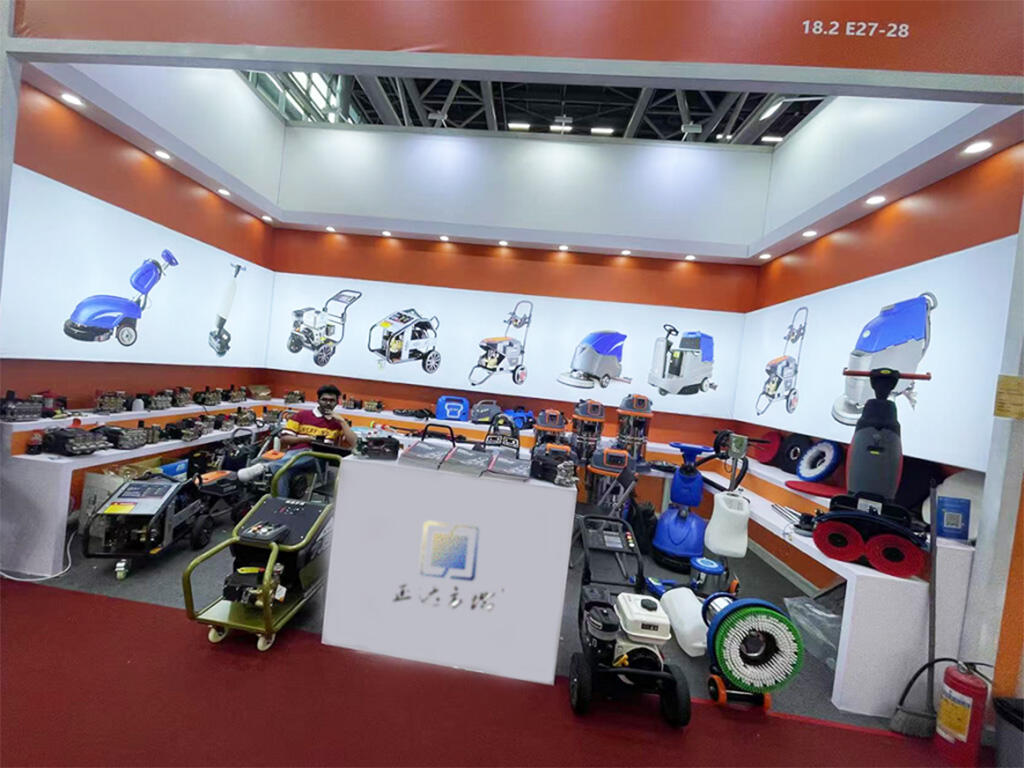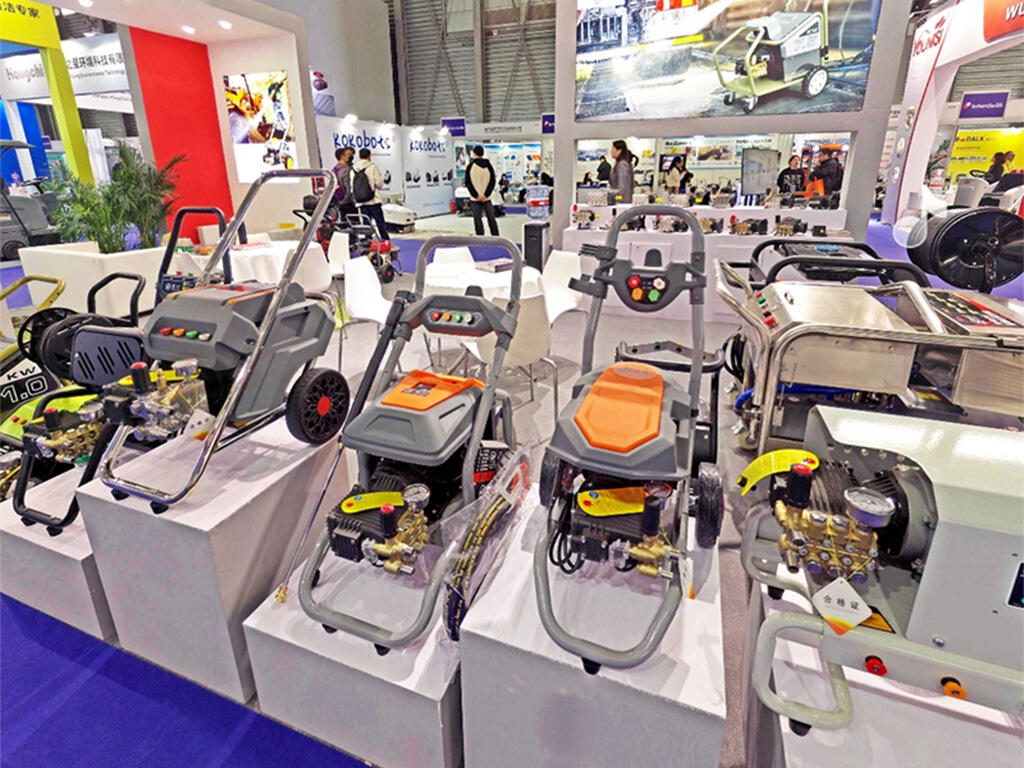Understanding Floor Sweeper Types for Commercial Mall Environments
Walk-Behind vs Ride-On Floor Sweepers: Matching Size and Traffic Needs
The walk behind sweepers work really well in those narrow spots like food courts and between shop displays because they have cleaning widths around 18 to 24 inches, so people can still walk past while we clean. Ride on models tell a different story though. According to ISSA data from 2023, these bigger machines can handle up to 30 thousand square feet every hour, which makes sense why stores prefer them for big open spaces when business is slow. Looking at recent retail research from last year, malls that switched to ride on sweepers saw their cleaning staff expenses drop by about 23 percent compared to places stuck with only the smaller walk behind machines. Makes financial sense for sure.
Sweep vs Scrub: Evaluating Dual-Function Floor Sweeper Capabilities
Sweep-scrub combination units effectively handle both dry debris and sticky spills common in food courts. However, dual-function systems require 15% more frequent brush replacements than single-purpose models. For high-traffic zones like cosmetic departments with polished tile, dedicated scrubbers may be preferable to prevent over-wetting surfaces during routine cleaning.
Indoor vs Outdoor Floor Sweeper Models: Adapting to Mall Perimeter Zones
Outdoor-rated sweepers feature reinforced brushes designed to manage parking lot gravel and salt residue without scattering debris. Units built for entryways include 40% larger debris chambers to accommodate seasonal leaf accumulation. Avoid deploying indoor-focused models near loading docks, where uneven surfaces contribute to 27% faster brush wear (Facility Maintenance Quarterly 2023).
Matching Floor Sweeper Capacity to Mall Size and Layout Complexity
Area Size and Cleaning Coverage: Selecting by Square Footage and Traffic Flow
When floor sweepers aren't the right size for the job, they end up wasting around 18% of their operating time just going back and forth and needing constant refills, according to a recent facilities management report from 2023. For smaller malls covering less than 50 thousand square feet, the best bet is usually those single disc battery powered walk behind machines with cleaning widths between 24 and 32 inches. These work pretty well in atrium areas and food court spaces where maneuverability matters most. Bigger properties over 150k square feet generally need something heavier duty though. Industrial ride on sweepers equipped with hoppers holding at least ten cubic feet make much more sense there since they cut down on how often workers have to stop cleaning to dump trash, especially when things get busy during normal cleaning hours.
| Mall Size | Optimal Sweeper Class | Cleaning Speed | Debris Capacity |
|---|---|---|---|
| <50k sq ft | Walk-behind | 2-3 mph | 4-6 gal |
| 50k-150k sq ft | Compact ride-on | 4-6 mph | 8-12 gal |
| >150k sq ft | Industrial ride-on | 8-10 mph | 15-20 gal |
Maneuverability in High-Traffic Zones: Navigating Pillars, Displays, and Queues
The latest generation of floor sweepers comes equipped with full circle obstacle sensing and brush heads that pull back almost instantly - about 0.8 seconds after hitting something stationary. These machines are pretty impressive in tight spaces too. Some of the best ones manage to clean around 98% of crowded areas thanks to their smart design features. They have a 32 inch wheelbase which makes them great for getting through narrow aisles that are barely 48 inches wide. Plus there are two different steering options available, front or rear pivot, so they can easily work around those tricky escalator footings. And let's not forget the super low intake area, just 2.1 inches off the ground, keeping them from bumping into delicate display cases where expensive jewelry sits.
Compact and Agile Sweepers for Multi-Level and Tight-Space Shopping Centers
For multi level shopping centers, compact floor sweepers that weigh less than 150 pounds are needed so they can fit into elevators, while widths need to stay below 28 inches to navigate through service corridors without issues. The latest designs include things like collapsible handles that fold down to just 14 inches deep, plus modular hopper systems which really help maintenance staff clean those specialty shops even when they're open for business, causing hardly any disturbance at all. Battery technology has come a long way too, with most top brands offering around 5 to 7 hours on a single charge. That usually covers the entire night shift, allowing cleaners to tackle anywhere from 12 to maybe 15 different retail floors before needing another recharge.
Evaluating Floor Type, Surface Sensitivity, and Cleaning Impact
Protecting Polished Tiles, Marble, and Epoxy Coatings with Appropriate Brushes
Polished tiles, marble, and epoxy-coated floors require soft nylon bristles or microfiber pads to capture fine dust without scratching. Stiffer polypropylene brushes can dull sensitive finishes over time. According to a 2024 hard-floor maintenance study, improper brush selection accounts for 62% of premature flooring damage in commercial environments.
Brush Type and Suction Power: Balancing Cleanliness and Floor Preservation
Effective cleaning requires matching suction power and brush speed to surface type. High suction (≥120 CFM) removes embedded grit from textured tiles but risks loosening grout or damaging unsealed marble. Dual-speed systems enable operators to switch between gentle settings for polished areas and aggressive modes for durable concrete walkways.
Long-Term Floor Care: Avoiding Damage from Overly Aggressive Cleaning
Using high-RPM scrubbing on delicate surfaces can shorten epoxy coating lifespans by up to 40% (Ponemon 2023). To preserve flooring integrity, conduct weekly brush inspections and prioritize machines with automatic pressure adjustment that adapt to different floor types within the same facility.
Assessing Debris Load, Cleaning Frequency, and Operational Efficiency
Common Mall Debris: Dust, Grit, Food Particles, and Paper Waste
Shopping centers deal with all sorts of mess problems these days. According to recent studies from Facility Management Journal in 2023, almost nine out of ten mall operators struggle with constant dust buildup and gritty residue across their properties. The situation gets even worse in food court areas where they're picking up between fifteen to twenty-five pounds worth of stuff every hour when crowds are at their highest. Fortunately, newer cleaning equipment is making a difference. These machines come equipped with advanced filters capable of trapping really tiny particles down to five microns in size. They also have those handy side brushes that scoop up bigger debris such as crumpled receipts and bits of packaging material left behind by shoppers.
Daily Maintenance vs Deep Cleaning: Aligning Machine Performance with Needs
Daily maintenance calls for sweepers with 4–6 hour runtimes and 25+ gallon debris capacities, while deep cleaning requires models with brush speeds exceeding 300 RPM for effective stain removal. A 2023 ISSA study shows malls using purpose-specific equipment reduce labor costs by 32% compared to “one-size-fits-all” approaches, thanks to optimized cleaning cycles.
Case Study: Achieving 40% Faster Cleaning in a 50,000 sq ft Retail Mall
A Midwest shopping center cut nightly cleaning time from 8.2 to 4.9 hours by adopting dual-mode sweepers with interchangeable brushes. Validated at 98% debris capture efficiency (ISO 15883 testing), these units’ 31-inch cleaning paths enabled consistent care of polished limestone floors despite 1,200+ daily visitors—a 40% productivity gain maintained over 18 months.
Comparing Performance Metrics and Long-Term Value of Floor Sweepers
Cleaning Efficiency Ratings and Real-World Performance Data (ISSA 2023)
According to ISSA data from 2023, today's floor sweepers can remove around 98% of debris from polished surfaces. The walk behind versions typically handle between 13,000 and 15,000 square feet each hour, whereas the bigger ride on models do roughly three times as much work. That makes them really important for places like shopping centers where they need to get everything cleaned quickly after closing time. Automated sweepers keep consistent pressure on their brushes and cover ground evenly, which cuts down on going over the same spots again by about 60% in busy areas. Some testing done in 2024 found that these combined sweeping and scrubbing machines actually saved around 3 hours every day when compared with separate cleaning equipment.
Upfront Cost vs Lifetime Savings: Labor Reduction and Maintenance Needs
The price tag on premium floor sweepers usually falls somewhere between twelve and twenty-five thousand dollars initially, but these machines typically pay for themselves within five to seven years thanks to savings on labor costs and less frequent maintenance requirements. According to research from McKinsey published last year, automated versions can cut down on staff requirements by about half. Plus, they tend to cost around thirty percent less to maintain because they come equipped with brushless motor technology and have those smart sensors that predict when parts might need attention before they actually fail. Facilities using lithium ion battery powered models are seeing some serious money saved too. One study by Ponemon Institute back in 2023 found that these systems could save roughly seven hundred forty dollars every single hour spent on cleaning tasks. And there's another benefit worth mentioning: these modern sweepers dry surfaces much faster than traditional ones do, which means slip risks drop dramatically - probably around eighty five percent according to some reports.
Key Value Comparison (5-Year Span)
| Metric | Basic Model | Advanced Model |
|---|---|---|
| Labor Cost Reduction | 28% | 63% |
| Water Usage | 45 gal/hr | 12 gal/hr |
| Maintenance Events | 22/yr | 6/yr |
FAQs about Floor Sweepers for Malls
What type of floor sweeper is best for small to medium-sized malls?
For smaller malls covering less than 50,000 square feet, walk-behind sweepers with cleaning widths between 24 to 32 inches are ideal. Compact ride-on models are suitable for malls between 50,000 to 150,000 square feet.
How do ride-on sweepers reduce operational costs in large malls?
Ride-on sweepers have a larger cleaning capacity, allowing them to cover up to 30,000 square feet per hour. This efficiency reduces the need for additional cleaning staff and decreases cleaning time, thus lowering labor expenses.
Are dual-function sweepers recommended for high-traffic areas?
Dual-function sweepers are effective for areas like food courts where both dry debris and sticky spills occur. However, they require more frequent maintenance, so dedicated scrubbers might be more practical in zones with polished tiles.
Table of Contents
- Understanding Floor Sweeper Types for Commercial Mall Environments
- Matching Floor Sweeper Capacity to Mall Size and Layout Complexity
- Evaluating Floor Type, Surface Sensitivity, and Cleaning Impact
- Assessing Debris Load, Cleaning Frequency, and Operational Efficiency
- Comparing Performance Metrics and Long-Term Value of Floor Sweepers
- FAQs about Floor Sweepers for Malls




